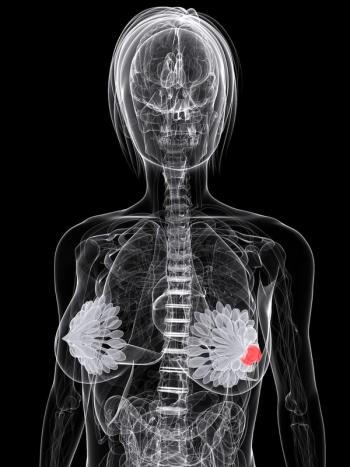
Oncology NEWS International
- Oncology NEWS International Vol 9 No 9
- Volume 9
- Issue 9
Trials of MammoSite Radiation Therapy System Underway
ATLANTA-The first patients have completed treatment using the MammoSite Radiation Therapy System (RTS) in a multisite, investigational clinical trial currently underway.
ATLANTAThe first patients have completed treatment using the MammoSite Radiation Therapy System (RTS) in a multisite, investigational clinical trial currently underway.
MammoSite RTS, developed by Proxima Therapeutics, Inc., is an intracavitary balloon device designed to provide accelerated site-specific radiation therapy in patients with early-stage breast cancer treated by lumpectomy, the company said in a news release. MammoSite therapy is simpler to deliver than brachyther-apy, the company said, and may avoid the side effects associated with external beam radiation therapy.
MammoSites accelerated treatment time [twice daily for 5 days] may make breast-conserving treatment an option for many more women, said Robert R. Kuske, MD, radiation oncologist, Ochsner Clinic, New Orleans, and principal investigator of the study. Traditional whole breast external beam radiation takes up to 6 or 7 weeks. Many elderly patients and those who work full time or live a great distance from the treatment center now opt for mastectomy to avoid the lengthy therapy.
The MammoSite device consists of an applicator with a balloon-tipped end (see Figures). During surgery or shortly afterward, the balloon is inserted into the surgical cavity and inflated with sterile fluid.
The end of the catheter is attached to a high-dose-rate afterloader, which houses the radioactive source, a tiny radioactive bead attached to a wire. The bead exits from the afterloader and slides up the catheter into the center of the inflated balloon, stopping at multiple positions to deliver various levels of radiation to the tumor cavity and surrounding areas.
The balloon is deflated after the final treatment session, and the MammoSite RTS catheter is removed.
The clinical trial, with enrollment of 50 patients, will be completed in early 2001, at which time the company expects to apply for FDA approval.
Articles in this issue
over 25 years ago
Soy’s Effect on Breast Cancer Remains Uncertainover 25 years ago
STAR Enrollment Tops 6,000 in First Year of Recruitmentover 25 years ago
New rhTPO Being Tested in Three Trialsover 25 years ago
New Research Centers Target How Market Forces Affect Health Careover 25 years ago
PRIMATOM System Combines CT Scanning With Radiation TherapyNewsletter
Stay up to date on recent advances in the multidisciplinary approach to cancer.
















































































